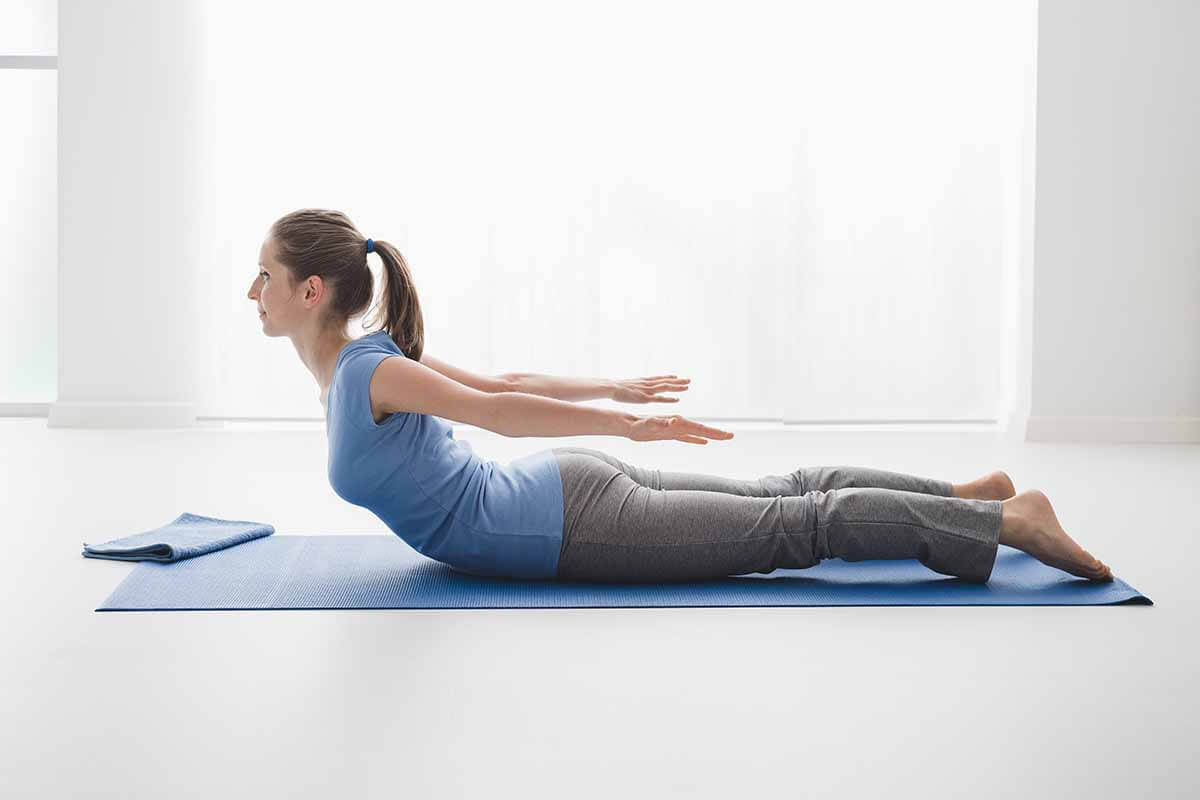
reathwork is a powerful and transformative practice that has been gaining popularity for its numerous mental and physical health benefits. By consciously controlling and manipulating our breath, we can tap into our body's natural healing abilities and improve our overall well-being. This comprehensive guide will help you understand the importance of breathwork, explore different techniques, and learn how to practice safely and effectively at home. Let's dive in and discover the power of breathwork!
What is breathwork and why is it important?
Breathwork is a conscious practice of controlling and manipulating our breathing patterns to achieve various mental, emotional, and physical benefits. The breath is intimately connected to our overall well-being, and learning to harness its power can help us manage stress, improve our health, and enhance our emotional balance.
The importance of breathwork
Breathwork is important because it:
- Promotes relaxation and stress reduction
- Enhances self-awareness and emotional balance
- Improves mental clarity and focus
- Supports physical health and vitality
- Encourages spiritual growth and development
The 3 main types of breathwork techniques
There are numerous breathwork techniques, but they can generally be categorized into three main types:
1. Relaxing breathwork
These techniques focus on calming the nervous system and promoting relaxation. Some popular examples include:
Diaphragmatic breathing (Belly breathing)
This technique involves deep, slow breaths that expand the diaphragm and engage the lower part of the lungs. To practice diaphragmatic breathing:
- Sit or lie down in a comfortable position.
- Place one hand on your chest and the other on your belly.
- Inhale slowly through your nose, allowing your belly to rise while keeping your chest still.
- Exhale through your mouth, letting your belly fall.
- Repeat for several minutes, focusing on the rise and fall of your abdomen.
4-7-8 breathing technique
Developed by Dr. Andrew Weil, this technique helps to calm the mind and promote relaxation. To practice the 4-7-8 technique:
- Sit comfortably with your back straight.
- Close your eyes and take a deep breath in through your nose for a count of 4.
- Hold your breath for a count of 7.
- Exhale slowly through your mouth for a count of 8.
- Repeat the cycle 4 times.
2. Energizing breathwork
Energizing breathwork techniques aim to increase energy levels, boost alertness, and improve mental focus. Examples from the yoga tradition include:
Breath of Fire (Kapalabhati)
This technique involves rapid, forceful exhalations and passive inhalations. To practice the breath of fire:
- Sit comfortably with your spine straight.
- Take a deep breath in through your nose.
- Exhale forcefully through your nose while contracting your abdominal muscles.
- Allow the inhalation to happen naturally and passively as you relax your abdominal muscles.
- Continue for 1-3 minutes, focusing on the forceful exhalations.
Alternate Nostril Breathing (Nadi Shodhana)
This technique balances the left and right hemispheres of the brain and promotes mental clarity. To practice alternate nostril breathing:
- Sit comfortably with your spine straight.
- Close your right nostril with your right thumb and inhale through your left nostril.
- Close your left nostril with your right ring finger, release your thumb, and exhale through your right nostril.
- Inhale through your right nostril, close it with your thumb, release your ring finger, and exhale through your left nostril.
- Repeat for several cycles, alternating nostrils with each inhalation and exhalation.
3. Transformational breathwork
These techniques promote emotional release, healing, and personal growth. Some examples include:
Holotropic Breathwork
Developed by Dr. Stanislav Grof, this technique involves rapid, deep, and continuous breathing to induce altered states of consciousness for self-exploration and healing. Holotropic Breathwork is typically practiced in a group setting, under the guidance of a trained facilitator, and often accompanied by evocative music.
Rebirthing
Created by Leonard Orr, Rebirthing is a conscious connected breathing technique that aims to release suppressed emotions and traumas from early childhood. The practice involves continuous, circular breathing without pausing between inhalation and exhalation. Rebirthing sessions are often conducted one-on-one with a trained facilitator.
Wim Hof Method
Developed by Dutch extreme athlete Wim Hof, this method combines breathwork, cold exposure, and meditation to improve mental and physical resilience. The breathwork component involves 30 rapid, deep breaths followed by a breath hold and a recovery breath. To practice the Wim Hof Method breathwork:
- Sit comfortably with your spine straight.
- Take 30 rapid, deep breaths, inhaling fully through your nose or mouth and exhaling passively through your mouth.
- After the 30th breath, exhale completely and hold your breath for as long as you comfortably can.
- Inhale deeply and hold the breath for 15-20 seconds before exhaling.
- Repeat the cycle for 2-3 rounds.
This technique is often followed by cold exposure, such as cold showers or ice baths, and meditation to further enhance its effects. Please note that the Wim Hof Method may not be suitable for everyone, particularly those with certain health conditions, and should be practiced with caution.
In summary, breathwork techniques can be divided into three main categories: relaxing, energizing, and transformational. Each category offers unique benefits and can be practiced to address specific needs or goals. When exploring breathwork, it’s important to choose a technique that resonates with you and aligns with your personal objectives. As with any new practice, it’s always a good idea to consult with a professional or seek guidance from a trained facilitator to ensure you’re practicing safely and effectively.
How can breathwork improve my mental and physical well-being?
Breathwork offers numerous benefits for both mental and physical well-being:
Mental well-being
- Reduces stress and anxiety
- Improves focus and concentration
- Enhances emotional regulation
- Promotes mindfulness and self-awareness
- Boosts creativity and problem-solving abilities
Physical well-being
- Increases lung capacity and oxygenation
- Supports cardiovascular health
- Boosts energy levels and stamina
- Strengthens the immune system
- Improves sleep quality and reduces insomnia
Can breathwork help with specific health conditions or emotional issues?
Yes, breathwork can be a helpful tool for managing and alleviating various health conditions and emotional issues:
Health conditions
- Asthma
- Chronic pain
- Hypertension
- Digestive issues
- Chronic fatigue syndrome
Emotional issues
- Anxiety and panic attacks
- Depression
- Trauma and PTSD
- Grief and loss
- Anger management
How do I choose the right breathwork technique for my needs?
When choosing the right breathwork technique, consider the following factors:
- Your goals: Determine the specific mental, emotional, or physical benefits you seek to achieve through breathwork.
- Your comfort level: Choose a technique that feels comfortable and resonates with you.
- Your experience: If you’re new to breathwork, start with simpler techniques before progressing to more advanced methods.
- Your schedule: Consider the time commitment required for each technique and choose one that fits your lifestyle.
- Guidance: Seek professional guidance from a breathwork practitioner or therapist if you are dealing with complex health issues or emotional challenges, or if you’re unsure which technique is best suited for your needs.
How can I practice breathwork safely and effectively at home?
To practice breathwork safely and effectively at home, follow these steps:
- Find a quiet and comfortable space: Choose a distraction-free environment where you can relax and focus on your breath.
- Set an intention: Before starting your practice, set a clear intention for the session to help guide your experience.
- Begin with relaxation: Start by taking a few deep breaths to relax your body and mind, allowing any tension or stress to melt away.
- Choose a technique: Select a breathwork technique that aligns with your goals and comfort level.
- Follow the instructions: Carefully follow the instructions for your chosen technique, paying attention to your breath and maintaining awareness of your body.
- Practice regularly: Consistency is key to experiencing the full benefits of breathwork. Aim to practice regularly, whether daily or several times per week.
Are there any risks or side effects associated with breathwork practices?
While breathwork is generally considered safe for most people, there are some potential risks and side effects to be aware of:
- Hyperventilation: Some breathwork techniques may cause hyperventilation, which can lead to dizziness, lightheadedness, or fainting. If you experience these symptoms, stop the practice and return to normal breathing.
- Emotional release: Transformational breathwork techniques can lead to intense emotional releases, which may be overwhelming for some individuals. If you have a history of trauma or emotional issues, consider working with a professional therapist or breathwork practitioner for guidance and support.
- Medical conditions: If you have a medical condition such as asthma, heart disease, or high blood pressure, consult with your healthcare provider before beginning a breathwork practice.
- Pregnancy: Pregnant women should exercise caution when practicing breathwork, as some techniques may not be suitable during pregnancy. Consult with your healthcare provider for guidance on safe breathwork practices.
Final Thoughts on the Types of Breathwork
Breathwork is a powerful and transformative practice that can significantly improve your mental and physical well-being. By understanding the different techniques and their benefits, you can choose the right approach to meet your needs and achieve your goals. Remember to practice breathwork safely and consistently to experience its full potential, and don’t hesitate to seek professional guidance if needed. Embrace the power of your breath and embark on a journey towards enhanced health, emotional balance, and personal growth.
Follow the link to learn how to get certified in breathwork.



